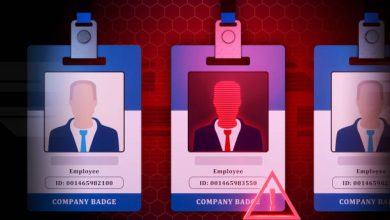Identity Is at the Core of Security

Data is the new oil. It is today’s gold. It is that valuable.
And that is why data is always under threat—from nefarious individuals who want to get their hands on it. This is true, particularly in Southeast Asia, where cases of data breaches in the form of ransomware attacks, phishing and insider attacks have been on the rise. In fact, according to a report by Surfshark, two Southeast Asian countries—Indonesia and the Philippines—were 2 of the 20 most breached nations in the world in Q1 of 2022, with Malaysia entering the top 20 in Q2 of the same year.

Tellingly, Chern-Yue Boey, Senior Vice President, Asia-Pacific, at SailPoint, recently told Cybersecurity ASEAN that these data breaches are happening across various industries, including government, healthcare and financial services. He gave as an example the AirAsia breach, where the personal data of AirAsia staff and 5 million passengers were held for ransom. He also cited recent instances of Malaysians getting scammed out of millions of ringgits by accounts opened in local banks by auditors and frontline officers.
Many Different Ways to Get Breached
These breaches, according to Boey, can be due to several factors, including weak passwords, security and application vulnerabilities and lost or stolen devices. There is also the growing problem of over-entitled and untracked identities where someone from within the organisation is either the one perpetrating the breach or the attack vector being exploited to commit the breach. Even orphaned accounts or those not updated can be exploited, and this only underscores the need for a comprehensive identity security program.
“Organisations that do not have a proper identity management strategy in place are putting themselves at high risk as they do not have full visibility into their entire security ecosystem which includes data access, network security and user behaviour analysis,” noted Boey, who also pointed out how a comprehensive identity security program enables central visibility and granular access orchestration of the entire workforce and their related access—including all permissions, entitlements, and roles.
“Today, organisations can manage up to thousands of identities, which means more access points that may present significant risks,” Boey added. “In order to mitigate the risks of breach and protect digital identities, data and resources, enterprises need a comprehensive identity security solution for complete visibility into all user types and their related access, including all entitlements, roles and attributes, to ensure employees receive the right access to the right resources to do their job.”
The Evolving Role of Identity Security
Incidentally, identity management or security once upon a time primarily served governance and compliance purposes, according to Boey. Today, however, identity security has become a core pillar of any holistic cybersecurity framework, so much so that the identity security industry is projected to grow at a compound annual growth rate (CAGR) of 14.5% by 2028 worldwide.
Boey attributed this growth to a multitude of factors, including:
- The emergence of the work-from-anywhere paradigm.
- Organisations’ growing reliance on the cloud.
- Increase in non-employee identities, like those of contractors, vendors and affiliates.
- Increase in non-human identities such as robotic process automation and IoT systems in the workforce.
According to a SailPoint report, machine identities make up 43% of all identities for the average enterprise, followed by customers (31%). Both, incidentally, are forecasted to grow at the fastest rate over the next three to five years, even as employees comprise only 16% of identities. In all, SailPoint reported that the total number of identities is projected to grow by 14% over that same span, adding more devices and identities for cybercriminals to exploit.
“With more connected devices and more identities than ever before, identity security has evolved to become incrementally critical,” Boey pointed out. “Organisations must ensure all identities, including employees, non-employees and non-human identities, are managed with a modern identity security solution that incorporates Artificial Intelligence (AI) and Machine-Learning (ML)—especially as it is no longer feasible to manually manage the increasing volume of identity data and complexities.”
A Region Lagging Behind
But, if SailPoint’s “The Horizons of Identity” report is any indication, most companies in the Asia Pacific (APAC) region are lagging when it comes to identity security. In fact, SailPoint found that 45% of APAC companies are still at the beginning of their identity journeys, and that means “Identity is a fragmented experience and highly manual,” with adoption spanning “only a few pockets of the organisation,” according to Boey.
On the other side of the spectrum, only 14% of APAC businesses have the highest level of identity maturity, which only means there is plenty of room for improvement. And it is imperative that companies try their best to improve given how the attack surface is ever-increasing with the proliferation of digital identities.
Boey, in particular, wants APAC businesses “to take a great leap forward.”
Making the Leap Forward
The question is: How do businesses take this leap?
“In order to see success in their identity journey, organisations should implement a modern identity security solution that spans cloud, SaaS and hybrid environments and built with AI/ML technologies that offer intelligence and insights into access privileges and potential risks, and automation in enforcing access controls,” said Boey, as he explained how organisations can level up their identity security. “With the right set of identity technology and supporting enablers, organisations can build a scalable identity program.”
Specifically, Boey offers these suggestions:
- Determine the challenges the identity security process aims to solve. For example, a help desk could be overburdened with access requests and password resets, or there are excess user permissions.
- Move from a legacy system to a cloud service provider. Ideally, this provider should be able to boost security through patch management, segmentation, encryption and secure access requirements.
- Assess user access. Access of employees who have moved to a different role or have left the company must be adjusted or removed—whichever is applicable.
- Seek a modern identity solution with AI/ML. Solutions with AL and machine-learning enable the organisation to acquire get deep visibility and understanding of all user access, including trends, roles, outliers and relationships. These also let organisations analyse potential cyber threats in real-time, enabling fast, seamless access requests and access certification, as well as effective access management that prevents conflicts of interest, information theft and compliance violations as users get only the right amount of access at the right time.
In other words, organisations will need the right identity security provider.
Choosing the Right Partner Is Vital
SailPoint, a true cloud-native, multi-tenant SaaS-architected platform is a notable example, featuring what Boey describes as “intelligent, autonomous, and integrated solutions [that] put identity security at the core of business operations.” This platform, in turn, “makes it easy for the modern enterprise to embed identity context across hybrid environments and centrally manage and control access to all data, applications, systems and cloud infrastructure, for all identity types.”
But partnering up with a provider, whether SailPoint or any other security firm, is just one part of the cybersecurity equation. The other part, according to Boey, is actually promoting a proactive security approach to keep pace with today’s changing attack landscape hallmarked by new threats emerging every day.
Simply put, it is critical to take action now because the costs of inaction are high.




